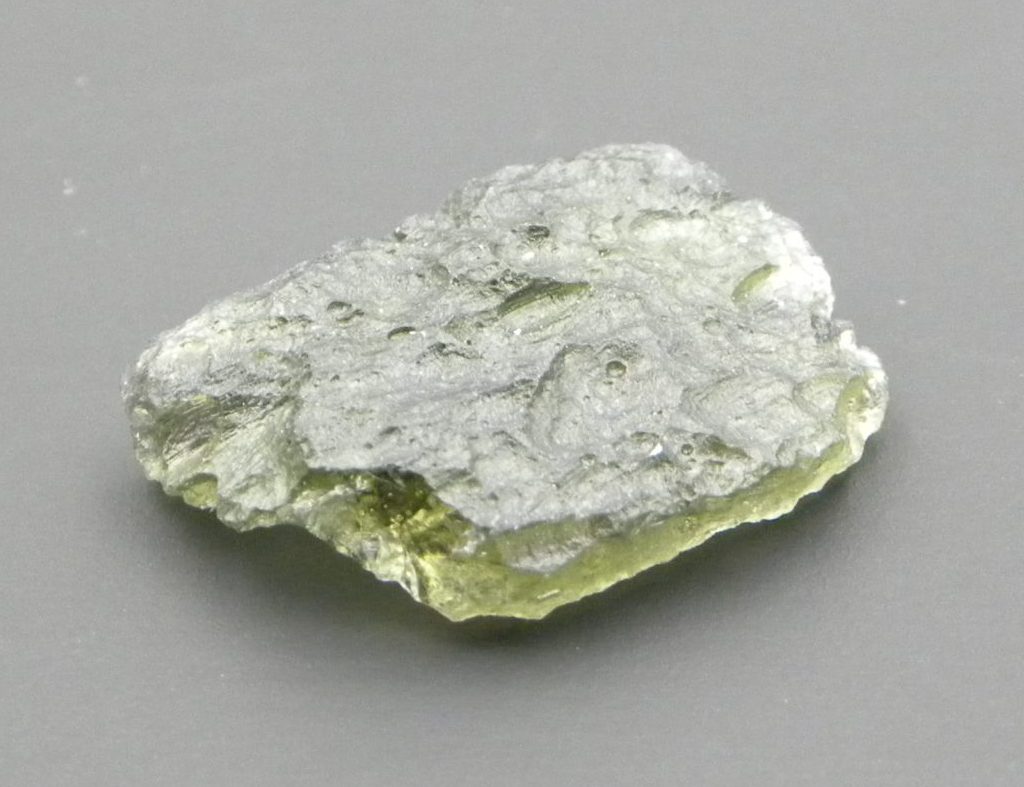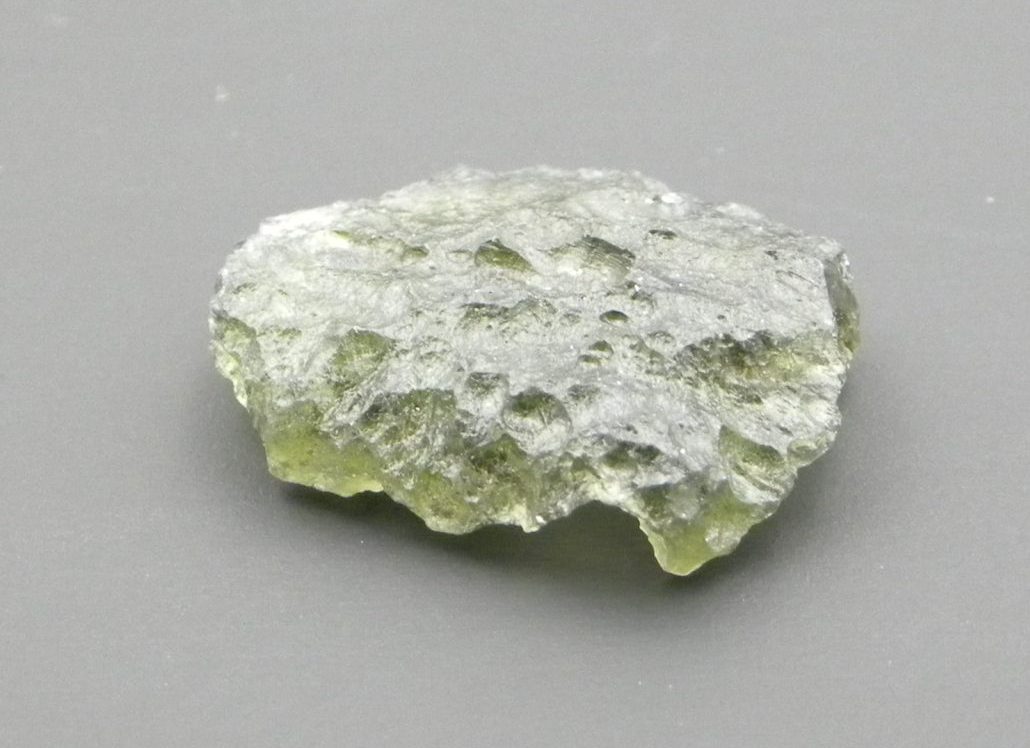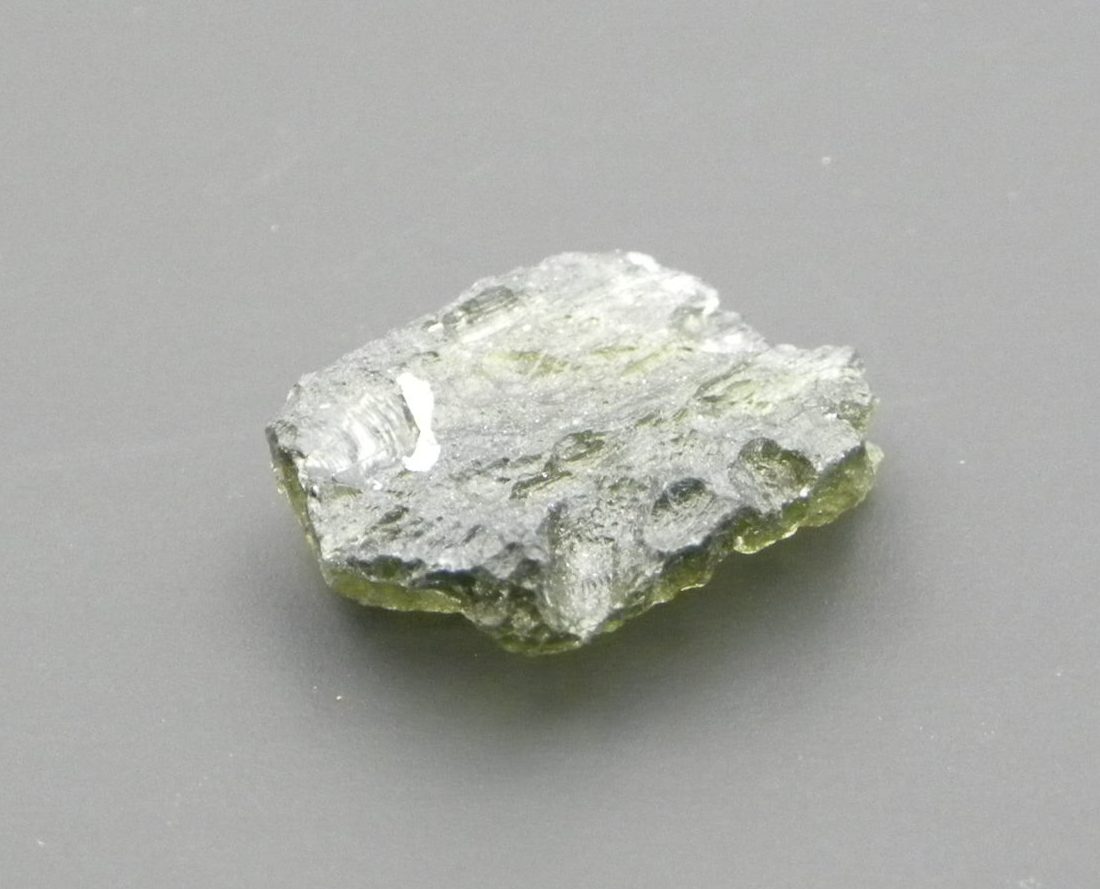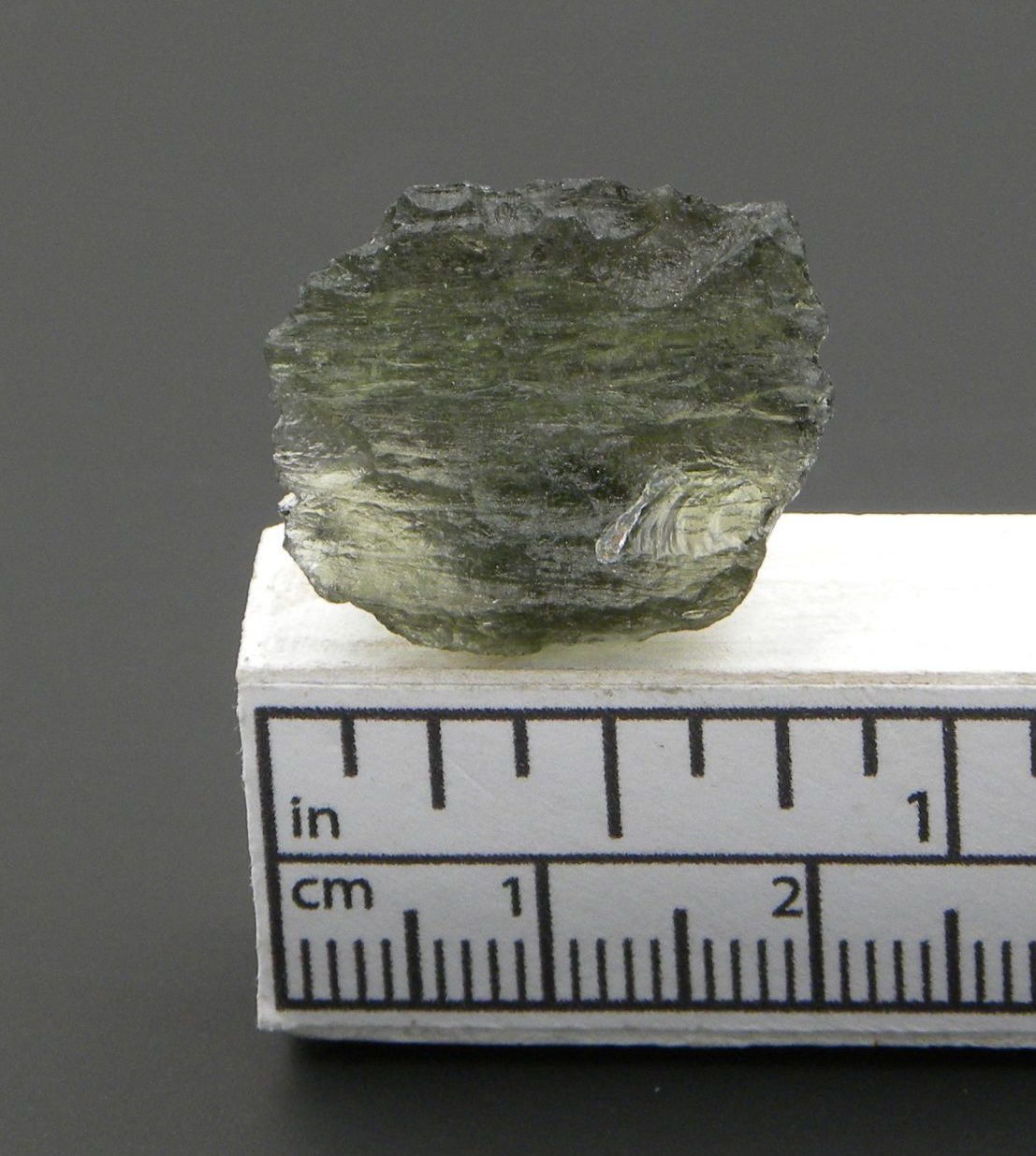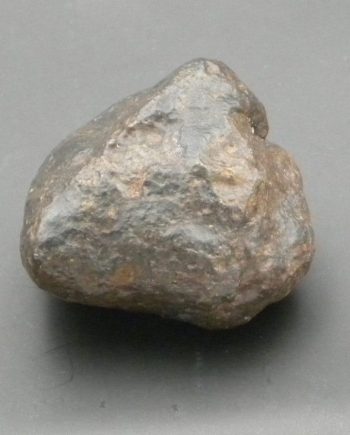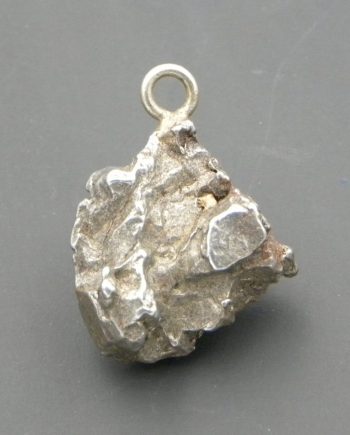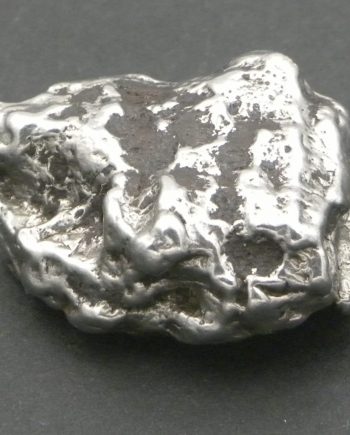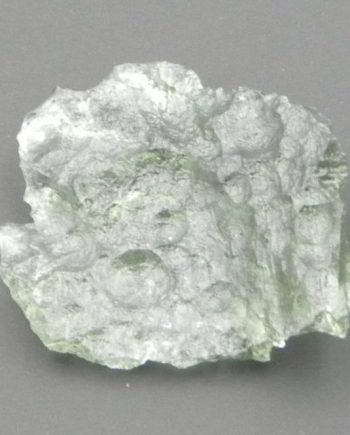Description
1.59gm Moldavite Tektite, with mossy green swirls, from South Bohemia, Germany
This superb 1.59gm Moldavite Tektite, measures 2.1cm across, with a mossy green colour and also all the typical characteristics. Moldavite is a translucent and vitreous tektite with a very distinctive dimpled and rippled appearance. Moldavite is the result of a huge meteorite striking Central Europe. This occurred 15 million years ago, and formed the Nordlinger Ries crater. The majority of Moldavite today comes from South Bohemia, Germany.
Tektites have been ‘mystery’ object for a long time, and also divided opinion. They were first described in a book in ancient China in 900BC during the T’ang dynasty. Various theories have emerged over the years as to how it was formed. These range from volcanic eruptions on the moon, to being caused by lightening, and also forest fires. For a long time they were thought to be made from obsidian, which has a similar appearance.
Tektites can be a variety of colours, from black, brown, green and also yellow. The chemical makeup of Tektites is notable for the extremely high silica content. Typically the ages of tektites can vary, anything from 100,000 years old to 35 million years old. These strewnfields are located in locations all over the world, with the exception of Antarctica. The name Tektite derives from the Greek word ‘tektos’ meaning ‘melted’, or molten.
The current, widely held and convincing theory, is that tektites are the result of meteorite impacts. The resulting incredible temperatures melting both stone and soil, and throwing them high up into the atmosphere. The resulting ejecta then fell, at the same time rapidly cooling and covering a wide area, or strewn field.
Return To Tektites Return To Meteorites & Tektites


